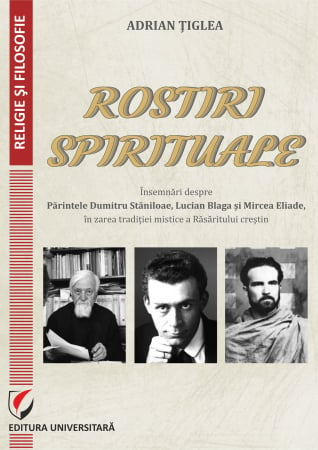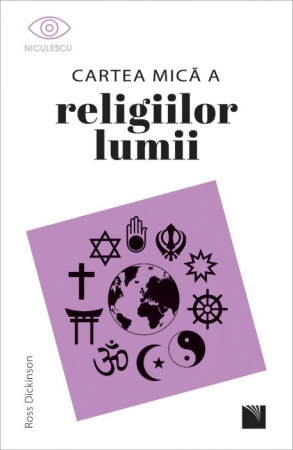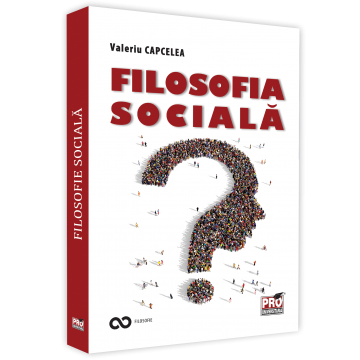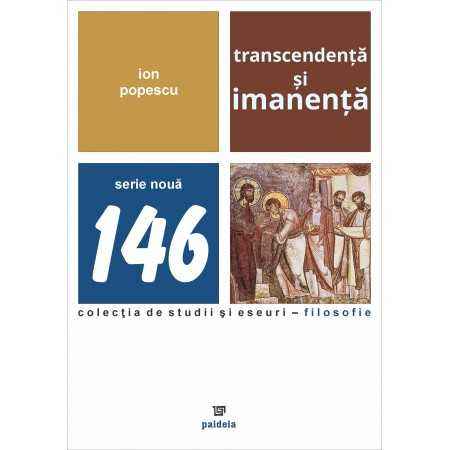ISBN: 978-606-28-0200-4
DOI: 10.5682/9786062802004
Publisher year: 2015
Edition: I
Pages: 238
Publisher: Editura Universitară
Author: Adriana-Claudia Citeia
- Description
- Download (1)
- Authors
- Content
- More details
- Reviews (0)
The book addresses to master students, from the second year of study of the master of Anthropology and European history, familiar with ancient and medieval history and having minimal knowledge of ancient Greek (optionally studied in the first year, first semester, at the course of Greco-Latin civilization).
-
Anthropology of Sacred Space. Between Mythos and Logos
Download
INTRODUCTION / 7
CHAPTER I:
TRANSDISCIPLINARITY IN THE VISION OF BASARAB NICOLESCU / 15
TAKES. „Homo sui transcendentalis” / 28
I.B. Traits of the transdisciplinary attitude: rigor, openness, tolerance / 35
CHAPTER II
METHODOLOGICAL COUPLES IN THE TRANSDISCIPLINARY APPROACH / 38
II.A. Development of exegetical abilities: from Homeric hyponoia to transcendence / 41
II.B. Methodological couples in the hermeneutics of the historical text / 84
II.c. Methodological couples. Example / 155
1. Mathematics and theology / 155
2. History and mathematics: the relation historical time - fractal time / 179
3. Philosophy and mathematics: the theory of henads and scalar spaces / 185
CHAPTER III
PERMEABILIZATION OF BORDERS BETWEEN DISCIPLINES / 200
III.A. Metairetic approach / 200
III.B. Permeability of transconcepts / 201
III C. Neognosticism-transdisciplinary paradigm / 214
CHAPTER IV
MULTIPLE IDENTITY AND HAPLOGRUP IDENTITY IN EUROPEAN PHILOSOPHICAL THOUGHT / 217
SELECTIVE BIBLIOGRAPHY / 227
- learn how to learn,
- learn how to compare,
- to learn to know, in the sense of the capacity to establish connections between knowledge coming from different epistemic models.
Learning to know involves, from the perspective of the transdisciplinary didactic approach, learning to use border concepts, to discover their area of transparency, where it is possible to make them compatible, "accommodate" them in a new field.
To learn to know means to learn to be creative, to get acquainted with events, phenomena, data from political history and from the history of thought, by stimulating the substitute imagination.
Learning to be refers to shaping one's own opinions, encouraging the appetite for erudition, in its classic sense of creative curiosity and creative association of notions and concepts. Learning to be also has the meaning of lifelong learning.
The transdisciplinary approach to history develops a tolerant attitude towards the "other", the inter and transgenerational dialogue being based on the respect of different opinions and beliefs.
Among the listed competencies, I consider that the most important is "learning to know", which can be a foundation of transdisciplinary teaching.
The transdisciplinary approach capitalizes on the dominant intelligence of each student (linguistic, logical-mathematical, spatial-visual), the ability to solve problematic situations.
Transdisciplinarity does not assume the role of a pan-discipline, capable of encompassing or otherwise organizing the range of existing disciplines, but is a way of approaching disciplinary research that has the role of "clarifying" and making accessible and useful areas between disciplines and beyond disciplines, through epistemological transfer (for example, the transfer of methods and concepts from mathematics to history).
The holistic perspective, promoted by transdisciplinarity, regards the student as a discussion partner.
"Capable of meaningful associations, focused on broad areas of study", the purpose of teaching and learning being "to reflect the real world, which is interactive".
However, the "reality" of the world acquires new meanings. Reality means not only what is visible, what is immediately accessible, but also the sum of the constructs of the imagination transformed in time, in ways of understanding, explaining the world, with its chronotopic coordinates: metaphysical space, fractal time, time-destiny, etc.
The transdisciplinary approach makes possible contemporaneity with the past and the future, in the sense of familiarization with ways of life and thinking seemingly incompatible with those of contemporaneity and in the sense of transgenerational dialogue, care for future generations, care that requires the development of a transgenerational ethic.
Therefore, in the transdisciplinary approach, history does not mean only the past, but a complex analysis of temporal ecstasies, in the sense that the present is the "carrier" of the past and the premise of the future. The idea of unity and continuity of temporal ecstasies is of overwhelming importance, because the student understands the "usefulness" of the past, the past in its dynamic, living dimensions, the idea of historical continuity and validation of the future through the present.
Transdisciplinary didactics contributes to the formation of an intellectual versatility in the sense of the polychronic approach of history and the capacity to adapt to the stages of the formation of a certain type of thinking (magical-mythical, religious, philosophical, scientific).
The design of the didactic approach on interactive methods is essential, because the student perceives this approach as an intellectual adventure, having as starting point fascinating ancient and medieval sources, such as Hekaloth, Merkabah or Mi'raj literature, appeared in the context of the meeting between Gnosticism, Judaism, Christianity, Islam, in a familiar chronological interval - that of the IV-IX centuries (studied at general and optional courses and seminars) and in a space approached not from the perspective of historical geography, but of psycho-geography and identity geography: The Late Roman Empire and the Byzantine Empire, as a meeting place for some philosophical-religious currents of synthesis.
The study of the anthropology of the sacred space requires a transdisciplinary approach, the methodological paradigm chosen being that of the methodological couples history-mathematics, philosophy-mathematics, eloquent in explaining some paradigms of thought focused on explaining space as an emanation of the Divinity.
The relationship between sacred space and profane space is fundamental in defining the parepidemic identity, specific to religious man and built around the common idea of Gnosticism, Judaism and Christianity, that man is a stranger and a traveler on earth, his origin and destination being Paradise.
The need to "quantify", to measure the sacred space led to the emergence of a language specific to psychoanalytic geography, with "floors", "palaces", its borders, but also a dogmatic language, easier to understand and master with the help of mathematics.
Sacred space, perceived axially:
-with psychoanalytic and nousanodic vertical axis, divided in turn into
positive area - of Pleroma, Paradise, Hekaloth floors, etc., and
the negative zone - of Kenoma, Hell and
-with the horizontal axis - of the places of memory, of pilgrimage is thus easier to understand and imagine.
Located on the border between Paradise and Hell, between memory and oblivion, the ancient and medieval man is the nodal point, the meeting place of the sacred space with the profane space, of the historical time with the eschatological time, his condition of being parepidemic being difficult to explain with the classical methods. of inter, multi and multidisciplinarity.
The language used in the "description" of the sacred space is allegorical, symbolic, apophatic (defining by negation the sacred and the sacred space). The course presents the features and limits of the language specific to the literature and iconography of the sacred space, in order to define a meeting place between expressible and inexpressible, between word and mystical silence.
The book Anthropology of the sacred space from a transdisciplinary perspective is addressed to master students, from the second year of study of the master of Anthropology and European history, familiar with ancient and medieval history and having minimal knowledge of ancient Greek (optionally studied in the first year, first semester, at the course of Greek-Latin civilization).

6359.png)
![Anthropology of Sacred Space. Between Mythos and Logos [1] Anthropology of Sacred Space. Between Mythos and Logos [1]](https://gomagcdn.ro/domains/editurauniversitara.ro/files/product/large/antropologia-spatiului-sacru-intre-mythos-si-logos-813-440759.jpg)














